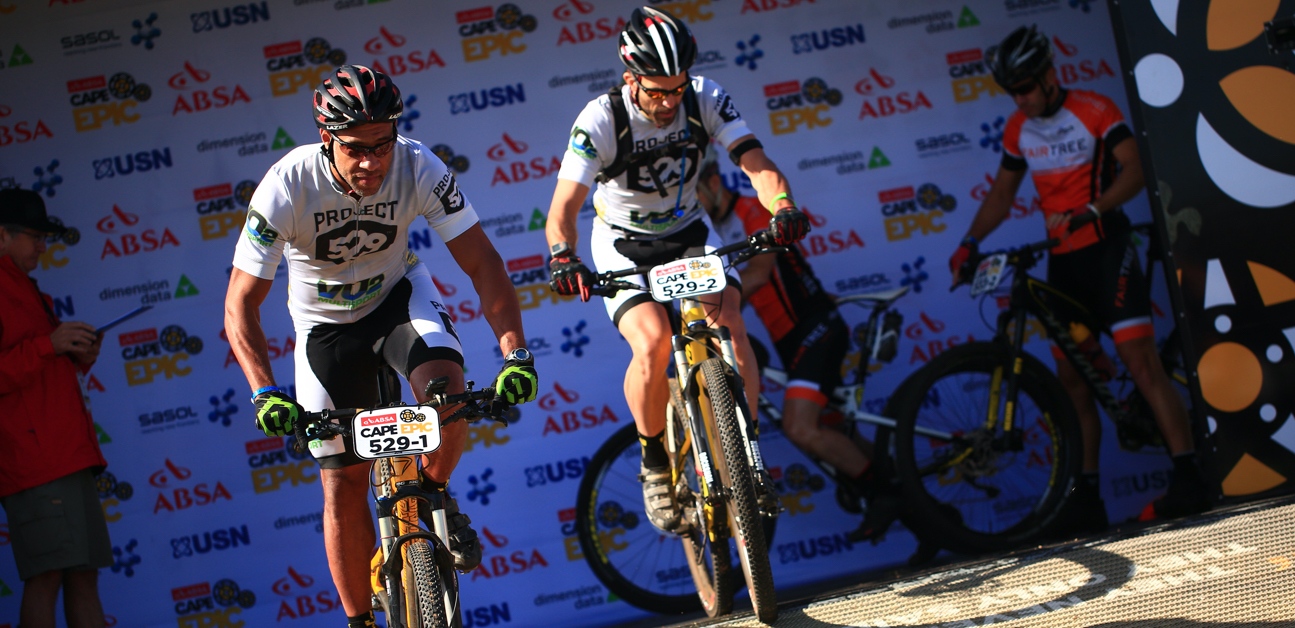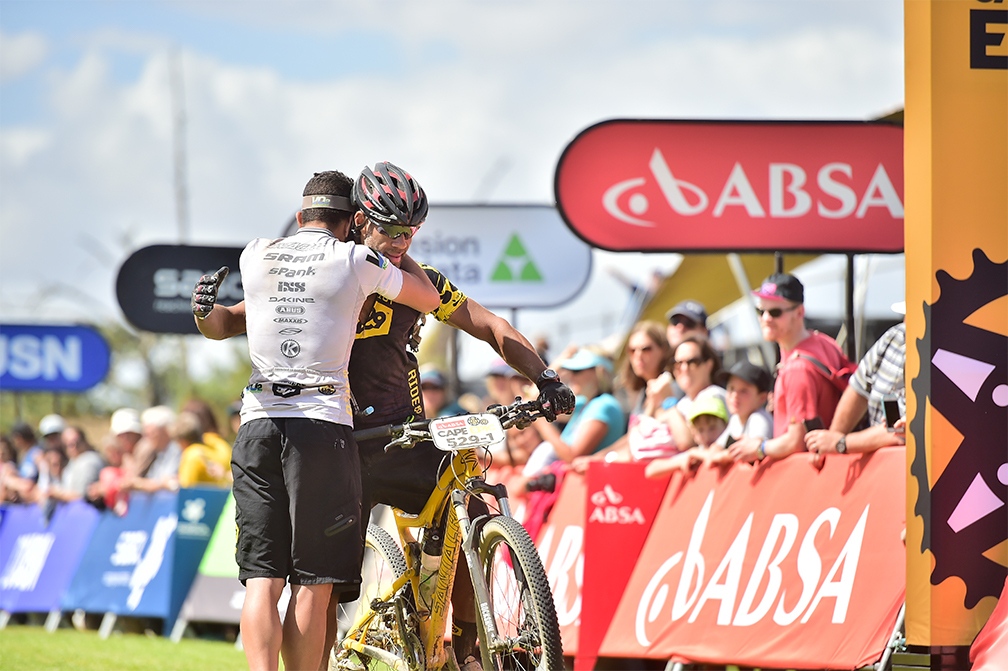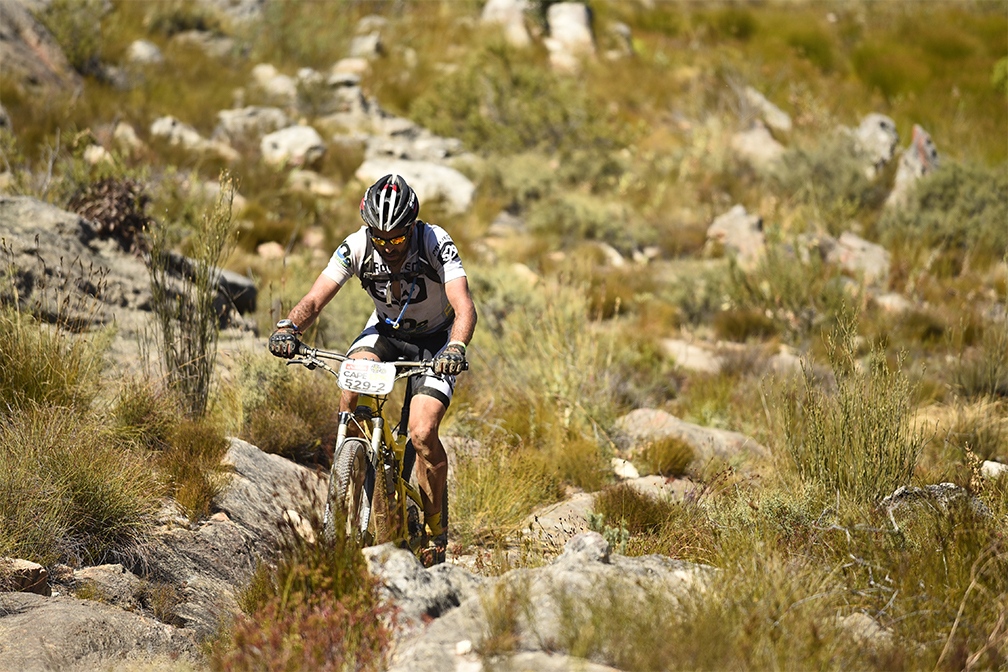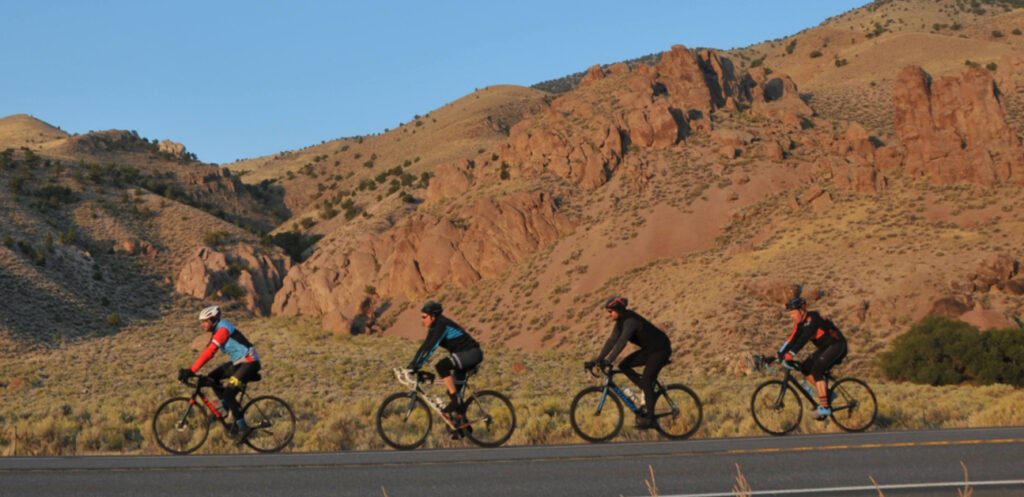Tips for Your First Mountain Bike Stage Race with Brandon Watson and Alex Mallet

Longtime friends and stage racing teammates, Alex Mallet and Brandon Watson, did their first major stage race at one of the most challenging stage races in the world —the Cape Epic in Cape Town, South Africa. From their achievements to their mistakes, here’s how Alex and Brandon tackled their first big stage race, and what they recommend to any athlete interested in mountain bike stage racing.
Share your success story and tell us how TrainerRoad helped you reach your goals.
From logistics and prep to fueling and riding, there’s a lot of moving parts in a multi-day, off-road event. Teammates Alex Mallet and Brandon Watson have done two major stage races together —the Cape Epic in South Africa and the Alps Epic in France. Though their race in South Africa didn’t go entirely to plan, Alex and Brandon came away from the event with the knowledge and experience they needed to be successful at the Alps Epic. These are some of the lessons they learned and the takeaways they can share from two long stage races.
Step One: Find a Good Teammate
Unlike a typical mountain bike race, many off-road stage races are team-based. In a team of two, your time for the day is determined by the teammate that crosses the finish line second. Which essentially means that you’re only as fast as the slowest athlete in your group on that day. This timing structure makes teamwork and good communication one of the most important aspects of stage racing.
Alex and Brandon agree that finding a good teammate starts with compatibility. Your abilities, goals, and personalities are all going to play a role in how well you race with someone. These are some of the things Alex and Brandon recommend seeking in a teammate and discussing before the race.

Make Sure Your Goals Align
Alex recommends choosing a teammate that shares the same goals and aspirations as you. There’s a big difference between racing to finish and racing to get on the podium, and it’s not something you want to sort out during race week. To avoid conflict or frustration during the race, make sure you and your teammate share the same goals and the same level of commitment before signing up.
Choose a Teammate With Similar Abilities
In conjunction with sharing the same goals, Brandon recommends choosing someone with similar technical and physical abilities as yourself. While there is an opportunity for athletes with different strengths and weaknesses to help one another, it can make it difficult to race together successfully if there’s a significant gap in abilities.
Brandon and Alex were living and training in different places during the preparation for the Cape Epic. Brandon spent a lot of time training indoors and found that he felt stronger on the climbs then Alex did, but struggled to keep up with Alex on the technical descents. This small difference in ability wasn’t detrimental to their performance but did set their pacing off just enough to be a pain point.
Choose a Teammate You Get Along With
While their strengths weren’t perfectly aligned, Brandon says that their mutual ability to set their egos aside and communicate directly with one another helped them keep their race together. Brandon and Alex have the added advantage of being good friends for more than twenty years. The two have spent a lot of time riding together and knew beforehand that they could get along and communicate amid harsh race conditions, hot weather, and crushing fatigue. When things got tough, as they often do during an off-road stage race, the two knew how to communicate and problem solve.
“No egos. Whatever needed to get done got done”
-Brandon Watson
Being able to communicate and get along with your teammate isn’t just an important part of racing. It plays a huge role in between races too, where the resting, prepping, and fueling happens. Brandon said keeping things organized and maintained in between races was simple. There were “no egos. Whatever needed to get done got done.” This helped both teammates keep their race routine organized and running smoothly.
Step Two: Do Your Research
At the time of the Cape Epic, Alex was living in South Africa, so he had a chance to acclimate to the heat and get to know some of the trail conditions. But for Brandon, he was making the journey from the U.S where the riding conditions and climate we’re different. Traveling for an event is tough, especially when it’s a multi-day event where you really won’t be able to pre-ride the whole course or completely acclimate to the setting. If you’re doing a destination event and you can’t spend time on course, gathering as much data as you can on the course, weather, and trail conditions is the next best thing.

Looking at the course map and elevation profile is a good place to start. Make sure you know the total elevation gain, distance, and profile of each day of racing. It can even be helpful to print out the course maps and markdown any information you find on climbs and challenging sections. You might not be able to ride all the tough sections of your course, but if you know where they are, how long they are, and what the terrain is like, you can prepare for the mental and physical strain that some sections may have.
Because it’s an off-road event and terrain plays an important role in how you pace, it’s a good idea to check out course previews on YouTube or talk to athletes on the TrainerRoad forum who’ve raced the same event. Anecdotes and videos that give you insight into what it’s like to race on that course in those conditions can be helpful. In turn, you can incorporate the necessary skills work into your outside workouts to prepare for the unique terrain of your event. Alex says in his experience, “Pacing will depend a lot upon the terrain and how comfortable you are with it.” So knowing what the terrain is and how to ride it will have a big impact on your race.
Step Three: Pacing and Racing
With as much data gathered as possible, you can begin to construct a pacing plan for your event. Alex and Brandon’s pacing plan was largely based on how each athlete felt from one day to the next, but they also used the data they had from their heart rate monitors and power meters to set parameters for their pacing. Here are the tips Alex and Brandon have for pacing and racing.
Don’t Go Too Hard on Day One
Pacing a week-long event is tough, but if there’s one thing Alex and Brandon said, they can be sure of it’s to not go too hard on day one. It’s unlikely that the first day of racing is going to determine your final position, and a lot can happen between the first and final day of racing. It’s better to get a feel for the racing on day one, focus on staying consistent and steady, and think about what pace you can maintain for a week, not a day.
Use RPE Paired with Heart Rate or Power to Pace
A lot of athletes will use either a heart rate monitor, a power meter, or both to pace their efforts during long events. In Brandon’s case, he knew that pacing with heart rate and staying within a specific heart rate zone was the best way to stay within his limits. Alex, on the other hand, had power and heart rate data to gauge his efforts. Alex did say, however, that he didn’t choose a single Intensity Factor to maintain for the entire week. The variability of the terrain and the different courses demanded a slightly different pacing plan from one day to the next. Alex recommends taking it one day at a time and using your data to adjust your pacing from one day to the next.
Adaptive Training
Get the right workout, every time with training that adapts to you.
Check Out TrainerRoadEat, Drink, Rest Repeat
It’s important to stay fueled throughout the week as consistently as possible. During your race, you should try to take in some type of fuel every hour. Depending on your individual physiology and how your body handles different types of carbohydrates, taking in between 80 and 120 g of carbs an hour is a good goal for any long-distance event.
Fueling doesn’t stop off the bike, though. As soon as you’re off the bike and resting up, it should be your goal to eat as much as possible. Brandon suggests eating even more than you think that you need to eat. If you have trouble stomaching a lot of food in between hard days on the bike, try meal planning beforehand and taking your food in at a slower rate. You have lots of time to eat slowly and get enough fuel in.
Staying hydrated is as important as staying fueled, especially when the weather is hot. On day four of the Cape Epic, Brandon ran into some trouble with his hydration. He hadn’t been fully replenishing his liquids after each day of racing. The hot weather and long days combined with hard efforts left Brandon severely dehydrated on his fourth day of racing. A few hours into riding on day four, Brandon had to be escorted off the course by the medical team due to his dehydration. It can’t be stressed enough —stay hydrated!
Step Four: Take it a Day at a Time
When you look at the week as a whole, it can be overwhelming. You have a teammate, pacing plan, bike, food, water, and rest to manage, and then on top of all that, there’s the race itself. It’s four to seven days, depending on the race, of challenging mountain bike racing. From a bird’s eye view, it can seem impossible. But the trick, according to Alex, is keeping it simple and taking the race one day at a time.
“Keep pedaling. Stay within yourself and you’ll make it day by day”
-Alex Mallet
In a stage race, your finishing time is an accumulation of all the decisions you make, the setbacks you face, and the challenges you overcome over multiple days. A lot is going to happen, and a lot can change. Being successful at a stage race means being prepared and making a plan, but also being flexible enough to handle the curveballs the race might throw at you. And when all the different variables, challenges, and racing gets overwhelming, Alex’s advice is to “Keep pedaling. Stay within yourself, and you’ll make it day by day.”
Tell us your story. Success isn’t always a race win. It can be life-changing health improvements, reaching a personal goal, or more.
For more cycling training knowledge, listen to Ask a Cycling Coach — the only podcast dedicated to making you a faster cyclist. New episodes are released weekly.
